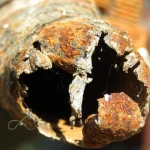
Bed bugs are small, nocturnal pests that feed on human blood and hide in mattresses, furniture, and cracks in walls. Recognising early signs of an infestation helps prevent it from worsening. Small red bites on exposed skin, usually in a linear or clustered pattern, indicate possible bed bug activity. Rust-coloured stains on bedding result from crushed bed bugs or excrement. Shed skins and tiny white eggs in mattress seams or furniture joints confirm their presence. A musty odour, produced by bed bug scent glands, is another indication of infestation. Identifying these signs early reduces the spread and makes treatment more effective.
Cleaning and Decluttering Affected Areas
Reducing clutter removes hiding places and makes it easier to detect and treat infestations. Regularly vacuuming carpets, upholstery, and mattress seams removes bed bugs and eggs. Washing bedding, curtains, and clothes in hot water and drying them at high temperatures kills bed bugs at all life stages. Sealing cracks in furniture and walls limits their movement. Steam cleaning mattresses and furniture provides an effective non-chemical bed bug solution. Deep cleaning and organisation create an environment that is less hospitable to bed bugs.
Understanding What Causes Bed Bugs
Bed bugs spread through human activity rather than poor hygiene. Travel is a major factor, as they hitch rides on luggage, clothing, and personal items. Staying in infested hotels or using shared transport increases the risk of carrying bed bugs home. Second-hand furniture and mattresses also introduce them into homes, especially if not inspected properly. Apartment buildings and shared housing make it easy for bed bugs to move between units through walls, electrical outlets, and piping. Even visitors who unknowingly carry bed bugs on their belongings can introduce them into new environments. Understanding these causes helps in taking preventive measures.
Monitoring and Trapping Bed Bugs
Bed bug traps and interceptors placed under bed legs detect and control infestations. These traps get rid of bed bugs from reaching sleeping areas and help monitor population levels. Sticky traps around infested furniture catch moving bed bugs. Frequent inspections using these tools help in early detection and reduce infestation severity.
Using Heat Treatments to Get Rid of Bed Bugs
Heat is an effective method to eliminate bed bugs, as they cannot survive extreme temperatures. Exposing infested items to temperatures above 50°C ensures bed bug eradication. Placing small infested objects in sealed plastic bags under direct sunlight accelerates the process. Professional heat treatment, which raises room temperatures to lethal levels, provides a reliable solution for severe infestations. Using heat effectively minimises the need for chemical treatments.
Seeking Professional Bed Bug Removal Services
Severe infestations require expert intervention to ensure complete elimination. Professional exterminators use heat treatments, fumigation, and targeted insecticides to remove bed bugs effectively. Experienced pest control professionals conduct thorough inspections and develop tailored treatment plans. Regular follow-ups prevent re-infestation and provide long-term relief from bed bugs.
Understanding what causes bed bugs, recognising infestation signs, and using effective solutions ensures a pest-free home. Combining heat treatments, cleaning, and professional services maximises success in bed bug control.
Applying Chemical Treatments for Bed Bug Control
Pesticides designed for bed bug elimination help control infestations when used correctly. Sprays and powders containing insecticides target bed bugs hiding in cracks and crevices. Applying chemical treatments directly to mattresses and bed frames ensures effectiveness. However, improper use of chemicals may lead to resistance, making infestations harder to eliminate. Seeking professional pest control services ensures that safe and effective treatments are used.
Using Mattress Encasements to Prevent Infestations
Encasing mattresses and box springs in bed bug-proof covers prevents infestations by sealing existing bugs inside and blocking new ones from entering. These covers are made from tightly woven fabric that prevents bed bugs from escaping or feeding. Using encasements alongside other preventive measures enhances overall bed bug control. Regularly inspecting encased mattresses ensures that no new infestations develop.
Learn More: Pest Myth: Do Bed Bugs Bite through Clothes?
Preventing Future Bed Bug Infestations
Taking preventive measures reduces the risk of re-infestation. Inspecting hotel rooms, luggage, and second-hand furniture before bringing them home minimises exposure. Regularly washing bedding, vacuuming floors, and maintaining cleanliness create an environment that is less attractive to bed bugs. Educating household members on the risks and early signs of infestations ensures proactive prevention.For more information about mosquito control solutions, contact Rentokil Singapore today.







